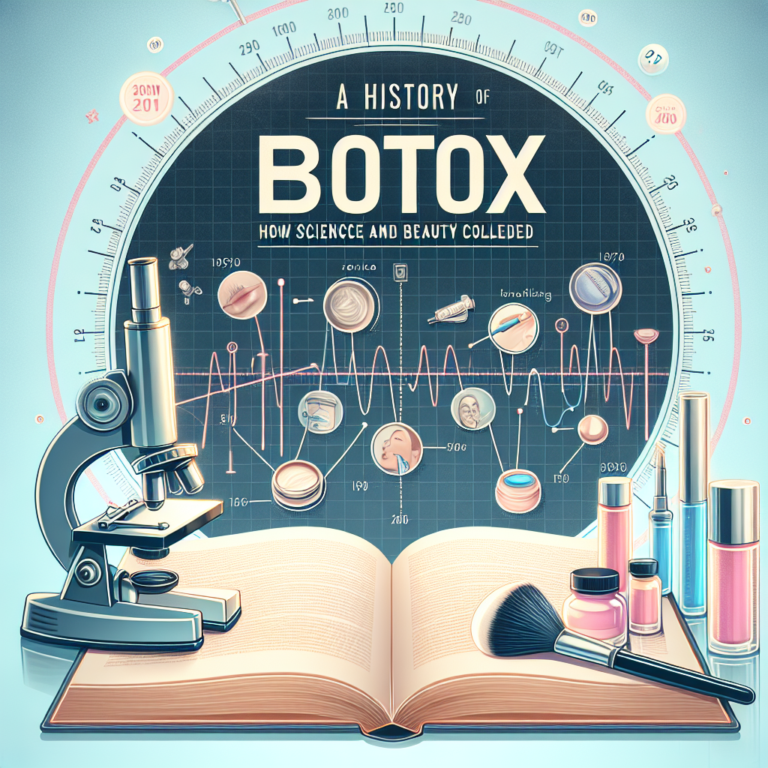In the realm of beauty and aesthetics, few products have had as profound an impact as Botox. First associated with medical applications, this two-syllable word has now become almost synonymous with youth, beauty, and the quest for the dewy visage of one’s youth. The story of Botox is a fascinating tapestry woven from scientific discovery, medical advancement, and societal perceptions of beauty. This article explores the history of Botox, tracing its journey from bacteria to beauty treatments.
The Origins: From Nature to Laboratory
The roots of Botox lie in the bacterium Clostridium botulinum, which produces the botulinum toxin—a potent neurotoxin that can cause paralysis. Discovered in the early 19th century, the toxin was initially linked to botulism, a severe food poisoning. It wasn’t until the mid-20th century that scientists began to recognize its potential uses beyond its deadly nature.
In the 1940s, researcher Edward Schantz isolated and characterized the toxin, leading to a better understanding of its properties. The early use of this toxin was primarily in a medical context—it was studied for potential applications in treating various muscular disorders. The groundwork laid by Schantz and other researchers paved the way for a revolutionary clinical breakthrough decades later.
Medical Marvel: The Birth of Botox
In the late 1970s, Dr. Alan Scott, an ophthalmologist, began experimenting with botulinum toxin for the treatment of strabismus, or crossed eyes. His work was pioneering, and by 1980, he had obtained approval for trials using a more refined form of the toxin, which he named Botox. This marked a turning point in medical science, allowing for innovative treatments for muscle spasms, chronic migraines, and excessive sweating.
While the initial applications of Botox were clinical, a notable observation occurred in the early 1990s when a handful of patients reported an unexpected side effect: smoother skin at the injection sites. This sparked interest among dermatologists and aestheticians, leading to further investigation into the cosmetic applications of the toxin.
The Aesthetic Revolution
The cosmetic use of Botox was officially sanctioned in 2002 by the U.S. Food and Drug Administration (FDA), when it was approved for the treatment of glabellar lines, more commonly known as frown lines between the eyebrows. This marked the beginning of a new era in aesthetics. Suddenly, Botox became a household name, transforming into a highly sought-after treatment for those wishing to enhance their appearance.
The rise in popularity of Botox coincided with a broader cultural shift toward valuing youth and beauty, fueled in part by the rise of celebrity culture and social media. High-profile endorsements from celebrities led to increased public acceptance. Botox became not only a treatment for medical conditions but also a staple of the beauty industry, with millions of procedures performed annually.
The Science behind the Beauty
Botox works by temporarily paralyzing muscles, blocking nerve signals that cause contractions. When injected into specific facial muscles, it can smooth out wrinkles and fine lines, providing a more youthful appearance. The process is quick and minimally invasive, making it appealing to those seeking to avoid surgical options.
Moreover, research into Botox has expanded, revealing its potential benefits for various conditions beyond aesthetics, including treatment for migraines, overactive bladder, and even depression. This versatility underscores the unique intersection of science and beauty, where a single substance is being utilized across multiple fields.
The Contemporary Landscape: The Evolution of Aesthetic Treatments
Today, the conversation around Botox has evolved. No longer confined to a select demographic, the procedure has broadened its appeal to both men and women of varying ages. The "Brotox" phenomenon, a trend where more men seek out Botox for cosmetic purposes, has emerged, further challenging gender norms in beauty.
With the growing acceptance of non-invasive beauty treatments, practitioners have also noted a shift toward preventative measures. Many younger individuals seek Botox not only for visible wrinkles but as a proactive approach, aiming to prevent these signs of aging from appearing in the first place.
Controversies and Criticisms
Despite its popularity, Botox has not been without controversy. Some critics argue that the prevalence of such treatments exacerbates societal pressures surrounding beauty and may promote unhealthy standards. Furthermore, the long-term effects of repeated Botox use are still under review, sparking debates within the medical community.
Additionally, the burgeoning market has led to an influx of improperly trained practitioners offering Botox treatments, raising concerns about safety and efficacy. As awareness increases, regulatory bodies have begun advocating for stricter guidelines to ensure patient safety.
Looking Ahead: A New Frontier
As science continues to advance, the future of Botox and similar treatments looks promising. Research into alternatives and combinations with other modalities, such as dermal fillers, laser treatments, and skin rejuvenation therapies, is ongoing. The aesthetic industry is poised for further innovation, and as our understanding of the aging process evolves, so too will the treatments available.
Botox has forever changed the landscape of beauty and aesthetics. From its scientific roots in bacteriology to its current status as a cultural icon of youth and beauty, its journey is a testament to how science and human desire can collide to alter our perceptions and experiences of beauty. As society navigates these evolving concepts, Botox will undoubtedly continue to play a pivotal role in the fascinating intersection of science, aesthetics, and the human experience.


